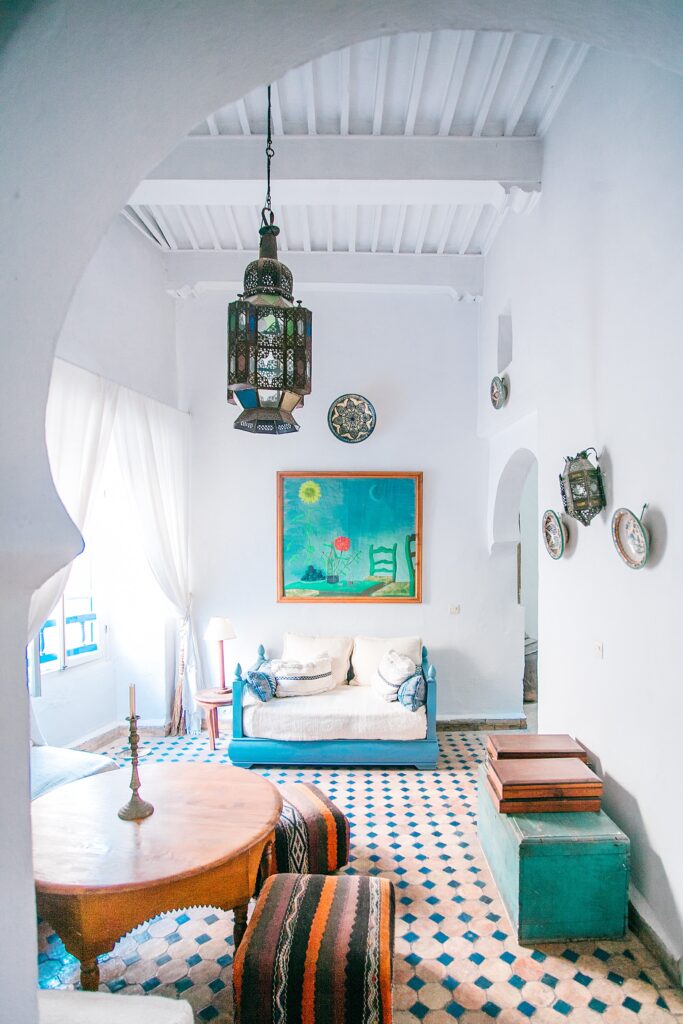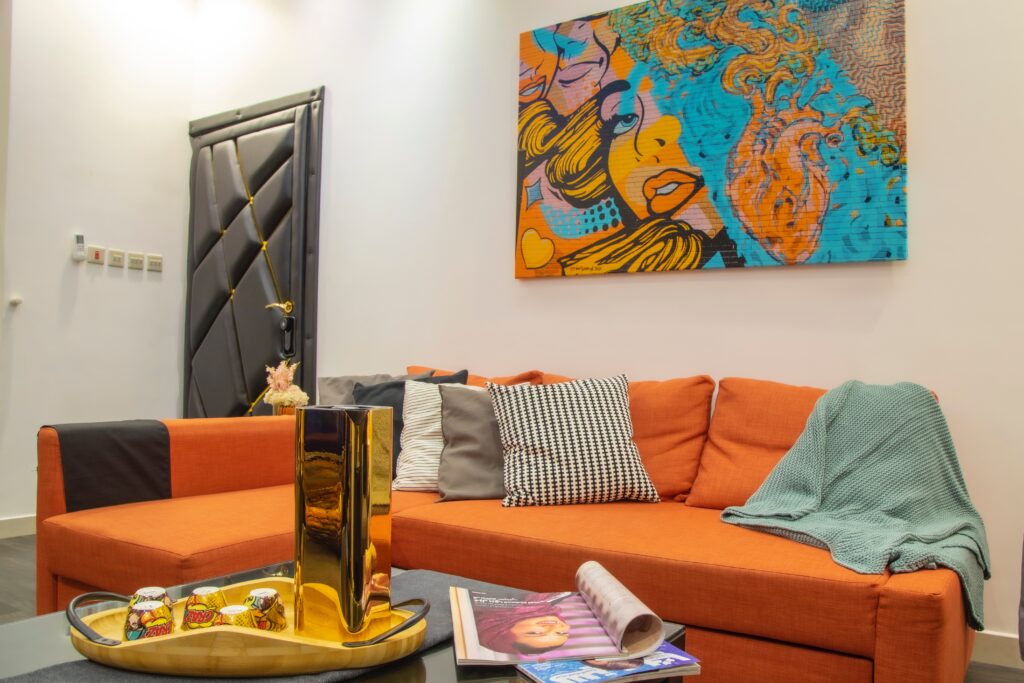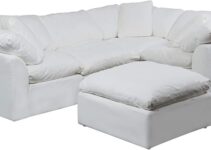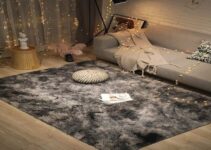In today’s bustling world, finding peace and quiet within the comfort of our own homes can be a challenging task. With the rise of urbanization, noise pollution from traffic, construction, and neighbors has become an increasingly pressing issue. This problem not only affects our mental well-being but can also disrupt our sleep patterns and hinder our ability to focus on tasks. Consequently, soundproofing a room from outside noise has become a sought-after solution for homeowners and renters alike.
In this detailed guide, we will talk about the science behind sound and how it moves. This will give you the knowledge you need to deal with noise pollution in a good way. We will explore a wide range of easy-to-implement soundproofing methods, including door and window solutions, wall treatments, insulation techniques, and sealing options.
How Does Sound Travel?
Sound, a form of mechanical energy, is produced by the vibration of molecules within a medium such as air, water, or solid objects. As these pressure waves propagate through the medium, they reach our ears and register as sound.
The ability of sound waves to travel long distances and penetrate various materials means that noise can easily enter our homes and workspaces, potentially causing disruptions and affecting our overall well-being. To effectively soundproof a room, it is crucial to understand the properties of sound and the materials that can inhibit its transmission.
There are two primary properties of sound that must be considered when soundproofing a space: frequency and amplitude. The number of vibrations or cycles that occur in one second is referred to as the frequency, and it is measured in Hertz (Hz). Human hearing typically ranges from 20 Hz to 20,000 Hz, encompassing low-frequency bass sounds to high-frequency treble sounds.
The loudness or intensity of a sound is referred to as its amplitude, and it is measured in decibels (dB). Sounds with higher amplitudes carry more energy and are therefore more challenging to block.
When soundproofing a room, there are three key strategies that can be employed:

Absorption
Absorptive materials are used to convert sound energy into heat, reducing the overall energy of the sound wave. This process effectively dampens the sound and minimizes reflections within a space. Materials commonly used for absorption include acoustic foam, mineral wool, and fiberglass insulation.
Reflection
Reflective materials can be used to redirect sound waves away from a space, preventing the sound from penetrating interior areas. Examples of reflective materials include mass-loaded vinyl, drywall, and gypsum board. The use of these materials creates an effective barrier that hinders the transmission of sound through walls, floors, and ceilings.
Damping
Damping materials dissipate sound energy by transforming it into a different form of energy, such as heat. Damping materials are often used in conjunction with absorptive or reflective materials to further reduce the transmission of sound. Examples of damping materials include green glue, damping compounds, and constrained layer damping systems.
Easiest Ways To Build A Soundproof Room From Outside Noise
Use A Solid Core Door Installed Together With A Door Sweep
A solid core door, as the name suggests, is constructed with a solid interior core made of wood or composite materials, whereas a hollow core door has a hollow interior. This difference in construction results in solid-core doors being significantly heavier and denser than their hollow-core counterparts. Due to their solid construction, solid core doors provide a range of benefits, including improved sound insulation.
One of the primary advantages of using a solid core door is its effectiveness in blocking sound. Sound waves are absorbed and dampened by the door’s increased mass and density, resulting in less noise transmission. This makes solid core doors an excellent choice for rooms where privacy and noise reduction are important, such as bedrooms, home offices, or media rooms.
When combined with a door sweep, a solid core door can become even more effective at preventing outside noise from entering a room. Door sweeps are specially designed devices that attach to the bottom edge of a door, sealing the gap between the door and the floor.
They can be made from a variety of materials, such as rubber, vinyl, or brush bristles, and are available in various styles to suit different types of doors and flooring.

Get A Soundproofing Curtain
Soundproofing curtains, also known as acoustic curtains, are designed to effectively absorb and block sound waves, reducing the amount of noise that enters a room from the outside or even between rooms. These curtains are made of thick, dense materials, such as polyester, velvet, or mass loaded vinyl, which are specifically chosen for their sound-absorbing properties.
The effectiveness of soundproofing curtains is determined by their sound absorption rating, also known as the Noise Reduction Coefficient (NRC) or Sound Transmission Class (STC). The better the curtains’ rating, the more noise they’ll block out. It’s essential to look for curtains with a high NRC or STC rating to ensure optimal noise reduction.
Soundproofing curtains are an excellent solution for people living in noisy urban environments, near busy streets, or for those who simply desire a quieter living space.They can be especially useful for fostering a calm atmosphere for reading, working, or sleeping.
Install An Acoustic Foam Panel (Soundproof Foam) On The Wall

A room’s noise level can be effectively reduced by using acoustic foam panels, which are designed to absorb and attenuate sound waves. These panels are ideal for a variety of applications, including recording studios, home theaters, music practice rooms, offices, and even industrial spaces where noise control is essential.
They can be easily mounted on walls, ceilings, or other surfaces and are available in an array of shapes, sizes, and colors to suit any aesthetic or functional requirement.
The Noise Reduction Coefficient (NRC) rating should be taken into account when choosing acoustic foam panels. The NRC is a numerical representation of the panel’s effectiveness in absorbing sound, with a higher rating indicating better sound absorption. A panel with an NRC of 1 indicates that 100% of the sound energy is absorbed, while a panel with an NRC of 0 reflects all the sound.
Generally, panels with an NRC of 0.5 or higher are recommended for most soundproofing applications. However, specific needs may warrant panels with even higher NRC ratings.
In addition to NRC, it is crucial to consider the thickness and density of the panels, as these factors also impact their sound absorption capabilities. Thicker panels with higher density are more effective at absorbing low-frequency sounds, while thinner panels are better suited for higher-frequency sounds.
Therefore, the choice of panel thickness and density should depend on the specific sound frequencies you are aiming to control.
Use A Window Liner
A window liner is an innovative, temporary, and removable solution designed to provide soundproofing for windows. This practical approach to noise reduction is especially useful for individuals living in noisy urban environments, where external sounds can be a constant disturbance.
Window liners are made from a layer of heavy-duty vinyl material that effectively blocks out noise, offering a quieter and more comfortable living space.
The installation process of window liners is simple and non-invasive, which makes them a popular choice for both renters and homeowners. To attach the liner to the window frame, magnetic strips or adhesive are used.
These attachment methods ensure a secure fit while also allowing for easy removal and reinstallation, as needed. This adaptability is particularly advantageous for those who may need to relocate or make adjustments to their living arrangements.
In addition to soundproofing, window liners can provide other benefits, such as increased insulation and energy efficiency. By creating a barrier between the window and the interior of the home, window liners can help to prevent drafts and maintain a consistent temperature within the living space.
Stuff The Wall With A Bookcase Or Artwork
Adding a bookcase or large pieces of artwork to your walls can greatly improve the acoustics within your space while also serving as an aesthetically pleasing addition to your room. By incorporating these elements, you are effectively utilizing a method known as sound absorption, which prevents noise from echoing throughout the room and reduces the amount of sound that enters from external sources.
Bookcases, in particular, are an excellent choice for soundproofing, as the density and thickness of the books can act as an effective barrier against noise. When filled with books, the shelves create a complex and irregular surface, which helps to scatter sound waves and prevent them from bouncing back into the room.
Similarly, large pieces of artwork, especially those with textured surfaces or made from dense materials like canvas or wood, can help absorb sound waves and minimize noise transmission.
To maximize the sound absorption capabilities, consider hanging the artwork on a wall that faces the primary source of noise, such as a busy street or a neighboring apartment.
Add Weather-Strips To Doors And Windows

Weatherstripping is a practical, cost-effective solution for sealing gaps around doors and windows, which not only helps to improve energy efficiency but also serves as a sound barrier to reduce unwanted noise from entering your living space.
To achieve the best results, it is essential to select a high-quality adhesive-backed weather strip, which can provide superior insulation and durability.
There are various types of weather-stripping materials available, including V-strip, door sweeps, foam tape, and silicone rubber. When choosing the appropriate weather strip, consider factors such as the size of the gap, the location of the door or window, and the environmental conditions in your area, such as temperature fluctuations and humidity levels.
Window Inserts Or Window Plugs
Window inserts or plugs are specially designed panels that provide an additional layer of soundproofing to your existing windows. These custom-made inserts are specifically created to fit perfectly within your window frame, ensuring a tight seal that helps to block out noise and improve overall insulation.
Acrylic and glass are popular choices due to their transparency, which allows natural light to pass through while still offering excellent soundproofing capabilities.
Acrylic, in particular, is lightweight and durable, making it an ideal choice for this purpose. Foam, on the other hand, is an affordable option that provides effective noise reduction, but it may not be as visually appealing as acrylic or glass.
The simplicity of installation is one of the main benefits of window inserts. They are typically designed with a user-friendly system that allows homeowners to easily install and remove them as needed. This feature makes window inserts a practical solution for those who want the benefits of soundproofing without making significant structural changes to their windows or walls.
Insulate The Ceiling And Floor
Insulating the ceiling and floor is an effective way to minimize the amount of sound that travels through a room, providing a quieter and more peaceful environment. Soundproofing can be particularly useful in homes, offices, or commercial spaces where privacy and noise reduction are important.
By using materials such as fiberglass insulation, mineral wool, or acoustic underlayment, you can create a sound barrier between floors and ceilings that absorbs and dampens sound transmission.
Fiberglass insulation
This material is made of fine glass fibers and is commonly used for thermal insulation in buildings. It also works well for soundproofing purposes due to its ability to absorb and dissipate sound waves. Fiberglass insulation can be installed between ceiling joists or floor beams to create an effective sound barrier.
Mineral wool
Mineral wool, also referred to as rock wool or stone wool, is created by melting and spinning unprocessed natural minerals into a fibrous material. It has excellent sound-absorbing properties and is widely used for acoustic insulation.
Acoustic underlayment
This is a specialized material designed to be installed beneath flooring materials, such as hardwood, laminate, or tile. Acoustic underlayments help to reduce impact noise (e.g., footsteps) and airborne noise (e.g., voices) by providing a cushioning layer between the floor and the subfloor. They are typically constructed from substances that absorb and dampen sound vibrations, such as rubber, foam, or cork.
Fill Wall And Window Cracks With Acoustic Caulk
Acoustic caulk, also known as soundproofing or acoustical sealant, is a specialized type of sealant that is specifically engineered to block and reduce the transmission of sound. This unique product is designed to fill gaps, cracks, and crevices in walls, around windows, doors, and other areas where sound may be entering or escaping a room, thus effectively providing sound insulation.
Acoustic caulk is typically made from a flexible, water-based, and paintable material, such as latex or silicone. This allows it to maintain its seal even as the building materials expand and contract with temperature fluctuations and settling. The key feature of acoustic caulk is its ability to dampen vibrations, which in turn reduces the transmission of noise.
Air Vent
Air vents are essential for maintaining proper air circulation and ventilation in a room or building. However, they can also be a significant source of noise transmission, particularly if the room is located near a noisy area or if the HVAC system is outdated or poorly designed.
To reduce the amount of noise entering a room through the ventilation system, there are two primary solutions: using a vent cover or installing an acoustic vent.
A vent cover is a simple and cost-effective solution that involves covering the air vent with a soundproof material, such as foam or rubber. The noise will be dampened and absorbed before it enters the room as a result. Most hardware or home improvement stores sell vent covers, which are simple to install.
Airtight Seal
Creating an airtight seal in your room is a critical step in achieving effective soundproofing, as it helps prevent sound from entering or escaping your space. To create an optimal sound barrier, it is important to address all potential gaps and openings in your room, including those around windows, doors, electrical outlets, and other fixtures. Here are some tips and techniques for sealing these areas and improving your room’s sound insulation:
Windows
Windows can be a significant source of sound leakage. To create an airtight seal around your windows, consider using weather-strips, acoustic caulk, or window gaskets. Double-pane or laminated windows can also help to reduce sound transmission.
Doors
To seal gaps around doors, install door gaskets, weather-strips, or door sweeps at the bottom. These materials can help to create an airtight barrier and reduce sound transmission.
Electrical Outlets and Switches
Sound can easily penetrate through small gaps around electrical outlets and switches. To seal these areas, remove the outlet or switch cover and apply acoustic caulk around the edges before replacing the cover.
Walls and Ceilings
Gaps and cracks in walls and ceilings can also contribute to sound leakage. Fill any visible cracks or gaps with acoustic caulk or a similar sealant. For enhanced soundproofing, consider installing additional insulation, such as mineral wool or fiberglass, in your walls and ceiling.
HVAC and Ventilation
HVAC (heating, ventilation, and air conditioning) systems can also let sound move from one room to another. To reduce this, seal gaps around ductwork and vents with acoustic caulk or specialized duct sealant.
Floor
Sound can also travel through floors, particularly in multi-story buildings. To address this, consider adding a layer of soundproofing material, such as acoustic underlayment, carpet padding, or mass-loaded vinyl, beneath your flooring.
Conclusion
Soundproofing a room from outside noise is a multi-step process that involves understanding how sound travels and using a variety of materials and methods to block and absorb sound waves.
By implementing the easiest solutions mentioned above, such as installing a solid core door with a door sweep, using soundproof curtains, and sealing gaps with acoustic caulk, you can create a peaceful and quiet environment in your home or workspace.


